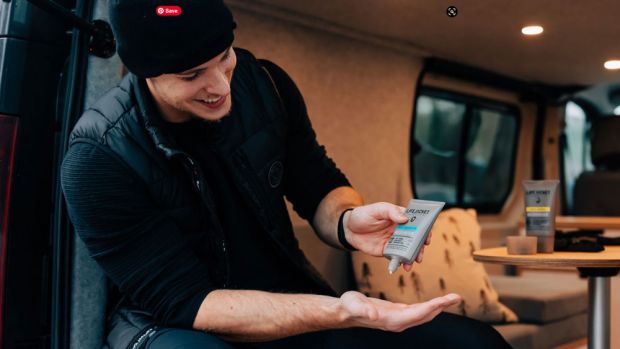Do You Wear Sunblock When Running In Winter? You Should, Says This Consultant Dermatologist
Skin cancer is more of a risk than you may think, which is why this expert recommends using protection year round

Living in the UK, with its frequently cloudy skies and mild temperatures, it’s easy to underestimate the risk skin cancer poses. However, the numbers are pretty stark.
Every year there are 16,200 new melanoma skin cancer cases in the UK – it’s the fifth most common cancer in the country. It’s also the most deadly cancer for men under the age of 40, and cases are rising every year.
We’re all for promoting the benefits of outdoor exercise, but exposure to the sun carries risks – as well as benefits – it’s worth being aware of. For more advice on how to manage those risks and spot possible skin cancers, we spoke to Dr Faisal Ali, consultant dermatologist and medical advisor to Melanoma UK.
What risk does exercising outdoors pose in terms of skin cancer?
First I’d say that in itself it doesn’t put you at risk of cancer. However, people exercising outdoors are more likely to be exposed to the sun, especially around the head and neck, the back of the hands, forearms and maybe the top of the chest and bottom of the legs depending on what you’re wearing. It’s important to make sure that those sites are protected from the sun.
People who exercise a lot may also be more body conscious, so they’re more likely to be outdoors, sunbathing or using sunbeds, all of which increases the risk of skin cancer.
How can you reduce the risk?
On sun-exposed sites like the head and neck in particular it’s important to put on sunblock every day of the year whenever you’re exercising outdoors. In the summer months, maybe apply sunblock twice a day. Even on a day in February, there is still UVB and UVA light in the atmosphere, and visible light as well.
There are other things you can do, like wearing hats or shades, or long-sleeved garments. If you can, avoid exercising when the sun is at its peak in the summer months, between 11am and 3pm. UPF clothing is also a convenient way to protect your skin from the sun as part of your overall sun protection.
Get the Coach Newsletter
Sign up for workout ideas, training advice, reviews of the latest gear and more.
What should you look for in sun cream?

The things to look out for are that you have protection from UVB, with a rating of SPF 30 or above. It should also have UVA protection, which is sometimes denoted with a four- or five-star rating, or it might just say UVA with a circle around it. There’s no brand in particular I would recommend – the best brand is the one the wearer likes the best, and a lot of supermarkets and pharmacies have own-brand creams that give you that protection.
One thing people might ask is if make-up or moisturisers containing SPF provide adequate protection. The answer to that is it’s not as good as sunblock.
Will wearing sun cream lower the amount of vitamin D you get when outside?
It does lower the vitamin D you get. It’s a difficult area. What I would say is that the parts of your skin that are the most likely to develop skin cancer are on the head and neck, so if you wanted to leave your forearms exposed that would be OK. You normally need about 30 minutes of sunlight exposure a day to get your intake of vitamin D, so if you’re out longer than that you should think about wearing sunblock. Generally when outdoors, even in the winter months, think about using sunblock.
See related
- The Best Sun Creams Of 2021 And What To Look For When Buying
- The Best Running Sunglasses
- The Best Running Caps
- How Much Time Should You Spend In The Sun To Get Vitamin D (And Avoid Skin Cancer)
How can you spot skin cancers?
My suggestion is to check your skin once a month, checking your moles from top to toe, getting to know what your moles look like. It’s really to notice if there’s anything new or changing there, and if there is, let your doctor know.
Your smartphone camera will be useful here, and there are free apps available to help. One is MySkinSelfie, a free app developed by Newcastle University (App Store and Google Play). There’s another one called Miiskin. You can photograph a mole every month or every three months just to see if it’s changing.
As for the things to look out for, there’s an ABCDE guide.
- A is for asymmetry.
- B is for irregular borders.
- C is for colours – check if there’s more than two colours in it.
- D is for diameter – check if it’s more than 6mm.
- E is for evolving or changing.
I’d also add a final one to that, which is what we call an ugly duckling sign. If one of your moles looks different to the others, if it’s darker or redder, or if it’s bleeding or itching, that’s another sign to get it checked out.
Try not to self-diagnose from photos on the internet. From my experience as a dermatologist, a lot of men have a tendency to self-diagnose and say “that’s fine”. There are lots of reasons for having moles and discolouration, but if you’re in doubt always have it checked out, because if caught early enough melanoma is very treatable. It can be surgically removed and that can be the end of it, whereas if it’s left it can spread to other parts of the body. The mortality from melanoma is higher than it needs to be.
LifeJacket Skin Protection sells skincare and UPF 50+ clothing for men and has partnered with Melanoma UK to raise awareness of the dangers of skin cancer

Nick Harris-Fry is a journalist who has been covering health and fitness since 2015. Nick is an avid runner, covering 70-110km a week, which gives him ample opportunity to test a wide range of running shoes and running gear. He is also the chief tester for fitness trackers and running watches, treadmills and exercise bikes, and workout headphones.
